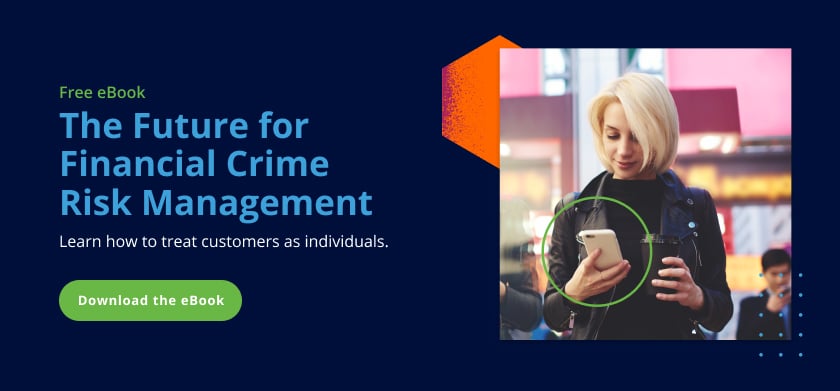
I’m a big fan of the Star Wars universe show Andor, especially for the action and political intrigue that adds to the bigger universe. But there’s another theme in the show that deserves more attention. Specifically, financial crime remains a severe problem even in a world with spaceships, lightsabers, and holographic projections. Disguising the source or destination of funds is still on criminals' to-do lists. Meanwhile, searching for these nefarious transactions remains a priority for the governing body. While the events of Andor occur a long time ago in a galaxy far, far away, there’s plenty banks can do now to prepare to future-proof their fraud and risk operations.
We live in an age where money can move from one account to another rapidly. It can even move rapidly across borders. But it’s not likely to stop there. Just a few years ago, we saw a handful of the world’s billionaires test vehicles for space flight. Should banks prepare to address payments sent from outer space? How can a space traveler even log a fraud complaint?
You don’t need a crystal ball to know that bank customers are unforgiving of banks that don’t offer modern conveniences. Preparing for the future of payments requires understanding who your customers are today.
Why Banks Must Put Data at the Center of Their Fraud Future-Proofing Efforts
Whether sending funds across borders or across galaxies, deciphering trustworthy transactions from risky ones requires reliable, updated data. Many banks are learning that having data in disparate locations creates unnecessary complications.
Look at the evolution of digital banking in recent years. As banks offered new digital channels, they realized they needed to invest in fraud prevention solutions to keep these channels secure. Each channel (websites, mobile apps, call centers, etc.) required its own fraud prevention solution to protect customers. As a result, many banks found themselves stuck with an overly complicated and siloed system of solutions that struggled to communicate with each other.
This siloed approach to banking makes it challenging for banks to learn their customers’ normal behavior. If the different systems don’t communicate with each other effectively or collect data in a central location, banks will struggle to accurately flag suspicious transactions. This arrangement proved highly problematic for banks when millions of consumers rapidly shifted to digital banking because of the pandemic.
The key mistake these banks made is believing that more banking channels require more technology. But more point solutions just resulted in more problems.
Banks need the right fraud prevention technology to get a 360-degree view of their customers and understand their normal patterns. By pairing the right fraud prevention technology, the right data, and machine learning, banks can make more educated decisions when reviewing individuals’ transactions.
No matter what specific shape the future of payments takes, having instant access to data that allows you to understand the specific behaviors of an individual across all payment channels and mediums and then being able to leverage that data to make informed decisions will be a critical component. Supplementing existing rules with machine learning will enable banks to see patterns faster and keep these services and channels secure.
4 Tips for Banks to Future-Proof Fraud Prevention
The future waits for no one. That’s why banks need solutions that both address their priorities today and the ones that will emerge tomorrow. The following steps will help banks future-proof their fraud operations no matter what the future holds.
1. Make Smarter Usage of Data
No one knows what the future holds. Whatever trends develop, banks will need access to a 360-degree view of customers based on holistic data, not point solutions. The end goal should be to take all customer interactions, regardless of channel or payment method, and send that data to a single platform where the data will be ingested and leveraged by rules and machine learning to identify fraudulent transactions. As new use cases emerge, banks can leverage this data to make educated decisions and understand normal transactions from high-risk ones.
2. Work with a Partner Who Sees the Future
Preparing for the future is a tall order. That’s why it makes sense to work with a partner who has an eye on upcoming market trends and a pulse on what’s coming from a compliance and regulatory perspective. This partner can act as your bank’s guide into unknown terrain, helping you make the right investments that will serve you now and tomorrow. This type of collaboration can also help you craft a plan for growth while helping you to stay focused on the next phase.
3. Implement Flexible Technology
Intergalactic banking may not be a reality today, but should that use case ever present itself, banks will need a fraud solution that enables them to quickly adapt to new market needs. In other words, the payment landscape is always evolving. Banks can’t invest in one-and-done fraud solutions that only address the challenges of the moment. Instead, they need to look for fraud solutions that can quickly adapt to changes in new customer payment preferences as well as criminal behaviors. As both customers and fraudsters shift their habits, banks must make sure their financial crime technologies keep pace.
4. Harness the Power of Machine Learning to Stay on Top of New Fraud Trends
These investments should not be treated as set-it-and-forget-it solutions. Banks should use machine learning solutions to improve existing fraud detection models. As technology evolves over time, banks will need more than just a machine learning platform. Leveraging a machine learning algorithm to detect fraud is a great first step. Leveraging your own data to train your models is a significant leap forward. Having a platform with a built-in data science studio that allows you to build, train, and deploy your own models into production and at scale all without writing any code is next-level stuff. Ideally, fraud analysts will need to continually build, train, and improve their own models based on their own data including feedback data from data analysts as they work fraud alerts. Whether banks need to improve their fraud detection capabilities or detect patterns that were previously undetectable, they need a solution that allows them to put machine learning to work and take advantage of all it has to offer.
Money can move as fast as twelve parsecs, if not faster (how much is a parsec anyway?). As the old saying goes, those who don’t learn from the past are doomed to repeat it. For banks and financial institutions, now is the time to prepare future-proof your fraud operations, whatever the future of payments may hold.
Share this article:
Related Posts
0 Comments6 Minutes
A Guide to Secure, Seamless User Authentication in Payments
Online payments demand a delicate balance between security and user experience. Consumers…
0 Comments7 Minutes
Combating Emerging Scams in the Philippines
The Philippines is witnessing remarkable growth in digital banking. Unfortunately, a…
0 Comments5 Minutes
Feedzai is a Leader in the 2024 IDC MarketScape for Enterprise Fraud Solutions
Exciting news! Feedzai, the world’s first RiskOps platform, is proud to have been named a…


